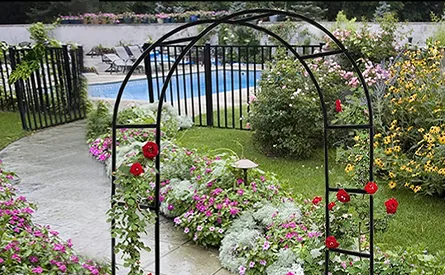- Afrikaans
- Albanian
- Amharic
- Arabic
- Armenian
- Azerbaijani
- Basque
- Belarusian
- Bengali
- Bosnian
- Bulgarian
- Catalan
- Cebuano
- Corsican
- Croatian
- Czech
- Danish
- Dutch
- English
- Esperanto
- Estonian
- Finnish
- French
- Frisian
- Galician
- Georgian
- German
- Greek
- Gujarati
- Haitian Creole
- hausa
- hawaiian
- Hebrew
- Hindi
- Miao
- Hungarian
- Icelandic
- igbo
- Indonesian
- irish
- Italian
- Japanese
- Javanese
- Kannada
- kazakh
- Khmer
- Rwandese
- Korean
- Kurdish
- Kyrgyz
- Lao
- Latin
- Latvian
- Lithuanian
- Luxembourgish
- Macedonian
- Malgashi
- Malay
- Malayalam
- Maltese
- Maori
- Marathi
- Mongolian
- Myanmar
- Nepali
- Norwegian
- Norwegian
- Occitan
- Pashto
- Persian
- Polish
- Portuguese
- Punjabi
- Romanian
- Russian
- Samoan
- Scottish Gaelic
- Serbian
- Sesotho
- Shona
- Sindhi
- Sinhala
- Slovak
- Slovenian
- Somali
- Spanish
- Sundanese
- Swahili
- Swedish
- Tagalog
- Tajik
- Tamil
- Tatar
- Telugu
- Thai
- Turkish
- Turkmen
- Ukrainian
- Urdu
- Uighur
- Uzbek
- Vietnamese
- Welsh
- Bantu
- Yiddish
- Yoruba
- Zulu
Dec . 04, 2024 00:20 Back to list
Steel Frame Design and Build A Comprehensive Overview
The steel frame design and building technique has revolutionized the construction industry, particularly in the realm of commercial and industrial structures. With its combination of strength, flexibility, and durability, steel has become a quintessential material for architects and engineers alike. As urbanization accelerates and construction demands evolve, understanding the principles of steel frame design and build is essential for lasting and efficient structures.
The Fundamentals of Steel Frame Design
Steel frame design involves the use of steel columns, beams, and girders to create a structural framework that can support various loads. The primary materials used in steel frames are structural steel sections, which can be easily fabricated and assembled on-site. The inherent properties of steel, such as its high strength-to-weight ratio, allow for long spans and open floor plans, creating vast spaces devoid of columns that obstruct layouts.
A well-designed steel frame takes into consideration several factors, including load-bearing capacity, deflection limits, and connections. The design process begins with load analysis, assessing both dead loads (the weight of the structure itself) and live loads (occupants, furniture, equipment). This analysis ensures that the frame can safely support these loads while adhering to local building codes and regulations.
Benefits of Steel Frame Construction
The advantages of steel frame construction are manifold. One of the most significant benefits is speed of construction. Steel components are often prefabricated, allowing for quicker assembly on-site, which can dramatically reduce project timelines. This efficiency not only reduces labor costs but also minimizes the disruption typically associated with lengthy construction projects.
Durability is another key advantage. Steel is highly resistant to various environmental factors, such as extreme weather, fire, and pests, significantly enhancing the lifespan of structures. When properly treated and maintained, steel frames can last for decades, making them a cost-effective option in the long run.
Additionally, the sustainability of steel cannot be overlooked. Steel is one of the most recycled materials globally, and its production often includes a high percentage of recycled content. This aspect contributes to reducing the carbon footprint of construction projects. Furthermore, steel frames can be designed for adaptability, allowing structures to be easily modified or expanded as needs change.
steel frame design and build

Common Applications
Steel frame design is prevalent in various applications, from high-rise buildings and bridges to schools and warehouses. The flexibility of steel enables architects to bring innovative designs to life, creating iconic structures that define city skylines. In industrial settings, steel frames support heavy machinery and loads, providing the necessary stability and strength.
In recent years, there has also been an increased trend in the residential sector, with more homes being constructed using steel frames. This development arises from homeowners seeking durable and low-maintenance alternatives to traditional building materials. Steel framing provides options for modern designs, and its resistance to termites and rot adds another layer of appeal.
Challenges and Considerations
Despite its numerous advantages, steel frame design is not without challenges. Corrosion is a notable issue, particularly in harsh environments. Therefore, protective measures such as galvanization or using weathering steel must be implemented to prolong the material's life. Moreover, temperature fluctuations can lead to thermal expansion and contraction, necessitating careful consideration during the design and connection processes.
Engineering expertise is crucial when it comes to steel frame design. The role of structural engineers cannot be overstated; they ensure that all elements are designed and analyzed correctly to withstand various forces without compromising safety.
Conclusion
In summary, steel frame design and build is a cornerstone of modern construction practices. Its numerous benefits—ranging from rapid construction and durability to sustainability—make it an invaluable option for a wide array of applications. As the needs of urban development continue to evolve, the role of steel frames will undoubtedly grow, shaping the architectural landscape of the future. Through advancements in technology, design practices, and materials science, the potential of steel as a primary construction material remains vast, promising an era of innovative and resilient structures for generations to come.
-
How Do Prefabricated Steel Structures Transform Modern Construction?
NewsJul.14,2025
-
How Do Prefabricated Metal Buildings Redefine Modern Construction?
NewsJul.14,2025
-
How Do Prefab Insulated Metal Buildings and Steel Structures Revolutionize Modern Construction?
NewsJul.14,2025
-
How Do Pre - Engineered Steel Structures Redefine Modern Construction?
NewsJul.14,2025
-
Advancing Modular Construction with Prefabricated Metal Structures
NewsJul.14,2025
-
Advancing Industrial Infrastructure with Prefabricated Steel Solutions
NewsJul.14,2025
Products categories
Our Latest News
We have a professional design team and an excellent production and construction team.












